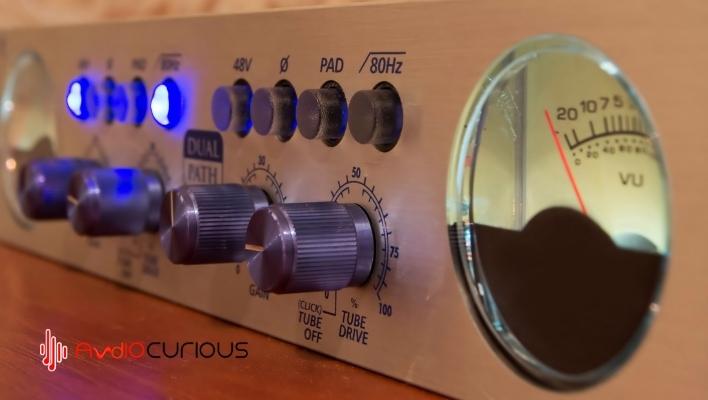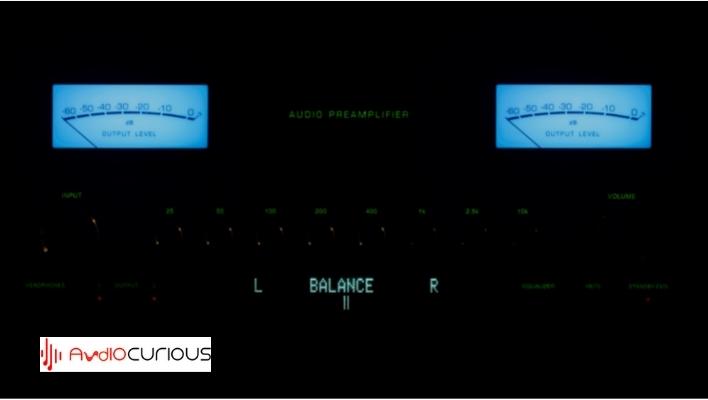If you’ve used a preamp or EQ before, you might have come across the word “preamp output.” Most likely, you thought it was just another meaningless audio term. The truth is much more complicated than that. In fact, the preamp output voltage is one of those audio terms that has caused many troubles for new users of the preamp or equalizer.
Hopefully, this article will enlighten you on how to increase the preamp output voltage to make your recordings and music better and more natural sounding.
Having a healthy amount of output voltage from your preamplifier is essential for getting the best sound from your system. You wouldn’t want to be stuck with a poor-sounding car audio system because you were told your DACs and amps could handle the same level of gain.
If you increase the gain of your preamp, then you are increasing the signal level from low to high. Gain is the increase in signal level and can be expressed as the input to output signal ratio. Most amplifiers have a certain amount of signal gain they produce. The higher this is, the louder an audio signal appears to be.
So, you want to wire a preamp to your speakers and don’t know how to increase the preamp output voltage? Well, it’s pretty simple and much more straightforward than it sounds. Here’s a quick guide on how to do just that.

What is a Preamp
A preamp is a device that amplifies the signal from an input source, such as a guitar, microphone, or line-level source, before it passes the signal onto the output stage.
The purpose of a preamplifier is to receive audio signals and boost them to be used with another source, such as a speaker or amplifier.
A power amplifier is an electronic device that increases a signal’s power before it reaches its destination. A preamplifier is a type of power amplifier that boosts weak signals before their connection to speakers or other audio components.
What is a Preamp Output Voltage?
A preamp output voltage is the amount of voltage that can be applied to a signal before it is amplified.
Think of a signal as pressure and the preamp output as the size of the hose that can be connected to it. The larger the hose, the more pressure you can apply and still get amplification. The larger the preamp output, the more power you can amplify your signal with.
The preamp output voltage is usually measured in millivolts, but it can also be measured in volts (for example, if you’re using an audio interface).
A preamp output can be any number of things, such as:
Analog (mono) – The amount of amplification that your amplifier needs. A typical analog preamp will have an output impedance of 10 kΩ or less. This means it will require an amplifier with a similar impedance to deliver the desired signal level.
Digital – A digital preamp is designed to work with computer-based audio production systems. These devices are often used for recording and editing audio in DAW software on computers or laptops. The output level of digital sources should always be set low, as high levels can cause clipping when they’re sent into a device with higher outputs than necessary.
Importance of Increasing Preamp Output Voltage
The process of pre-amplifying a signal is one of the most essential steps in the signal chain. It’s also one of the most misunderstood and underused. Increasing the output voltage of your power amp will make it sound better.
The goal of pre-amplification is to bring an unamplified signal to a level where a power amplifier can amplify it. The preamp takes the unamplified signal and boosts its gain so that it can be easily amplified by the power amp.
The reason for this is simple: If you increase the output voltage of your power amp, then more current can flow through it without increasing its resistance. This makes it possible for your power amp to deliver a stronger signal with less distortion.
Increasing the output voltage also makes it easier for you to drive other gear in your system. This is because most components have lower impedance than speaker impedances in most systems. Higher voltage levels mean higher current levels, meaning bigger signals can be sent from your power amp to your speakers and other gear.
On top of all that, there are some things all preamps can do that no other audio device can do. They can run signals through reversed polarity. They can be used as an interface between two pieces of gear. Finally, they can even provide gain control over an entire mix. These are especially important in preamp output in car stereos.

Step by Step Guide on Increasing the Preamp Output Voltage
In a sound system, the voltage output from the preamp is used to drive the power amplifier (PA) stage. The voltage output from the preamp is referred to as “preamp output” or “headroom.” To increase this voltage, you need to increase the gain of your preamp or equalize it so that it has more gain when compared with other components in your system.
The most common way of increasing the preamp output is by using an equalizer or another piece of equipment that boosts its gain. This method works well for some people but can be very expensive and complicated if you use one of those devices.
If you don’t have access to an equalizer or another piece of equipment that will boost its gain, then there are other options available to you. You can also make changes in your system without worrying about changing any settings on your components. These changes include:
- Adjusting tone controls on each component in your system (such as volume knobs and tone controls).
- Using different connections from one component to another.
- Using different cables.
If you want to increase the voltage output from your preamp or have an issue with low voltage output, then these are the steps you should follow:
Step 1#:
Disconnect the power to your amplifier from the wall.
Step 2#:
Remove any screws from the back of your amplifier.
Step 3#:
Open up the cover on your preamp and remove any screws from this cover as well.
Step 4#:
- Find out the nominal output voltage of your preamp. You can find it on the back of the unit or in the instruction manual.
- Find out how much voltage you need to increase to achieve your desired output voltage.
- Measure the actual output voltage of your preamp with a volt meter.
Step 5#:
Carefully remove the preamp from its mounting plate and place it onto an isolation platform such as an old CD player tray or something similar.
Step 6#:
Connect an LED voltmeter to one lead of a multimeter set to DC volts (the red lead). Connect the other lead to a ground point, such as a screw or bolt on the side of your amp’s chassis.
Step 7#:
Turn on your preamp and set it to “DC Volumes.” Set it as high as possible without clipping anything; preferably, at least 15V peak output. (If you have an adjustable sensitivity pot, turn that up.)
Step 8#:
Turn off your preamp, disconnect it from its power supply, and then check again to see if any peaks are showing on your meter that exceed 15V peak output. If they do, simply move down another few steps until they don’t show anymore, and then repeat step 6.
Step 9#:
Once everything is connected correctly, switch off and unplug everything, then turn it on again and try playing something.
Benefits of Increasing the Preamp Output Voltage
The benefits of increasing the output voltage of your preamp are many.
- You can use a higher voltage power supply to drive the signal into an amplifier with a higher output impedance.
- The signal will be less distorted at higher levels since it is more difficult for the signal to get smaller when you increase the input resistance of an amplifier.
- You can use high-voltage power supplies to drive long cables, as these will not damage them as quickly as lower voltage supplies.
- It is possible to increase the sensitivity of your preamplifier by using even higher voltages with it (see below).
- More excellent signal-to-noise ratio.
- Better protection against noise and hum.
- It has an improved signal-to-noise ratio at low frequencies.
- Better performance with amplifiers with higher output impedances.
- Improved reliability in systems that use electrolytic capacitors (ECC) and electrolytic filter capacitors (EFCC).
Safety Measures When Increasing Preamp Output Voltage
There is a risk of electrical shock when increasing the Preamp Output Voltage. The voltages involved in this operation are not low, and it is imperative that you use suitable precautions to ensure your safety.
The following safety measures should be taken when increasing the output voltage of your preamp:
- First, make sure that your power supply can handle it. Suppose you are using an outboard power supply that cannot supply enough current. In that case, you might want to think about moving your power supply closer to the processor. Here, it will be able to supply more current, and thus more current will be available for the signal going into the preamp.
- If the voltage is too high, the output transistors could burn out. Another safety issue is that there may not be enough heat sinking in the circuit, and thus there may be arcing between different parts of the circuit. This will cause damage, which could cause the failure of some components in the circuit, resulting in even worse sound quality.
- Ensure the power supply is completely disconnected from the circuit before changing settings or making any adjustments. This is especially important when changing a potentiometer setting or connecting a new cable.
- Always use a DC voltmeter with at least a 500V range to test the output of your preamp. A DC voltmeter with lower sensitivity will not accurately display the actual output voltage of your preamp, so it’s essential to use one that can handle high voltage levels without causing damage to yourself or other components in your system.
- Never exceed your preamp’s maximum safe output current rating (usually around 10mA). If you exceed this limit, you’ll risk burning out your power supply and damaging other components in your system.
- Next, make sure all of your cables are securely connected at both ends. Any loose connections could cause a short circuit, resulting in a fire or explosion that could damage your equipment and possibly even hurt yourself or others.
- You should also check your connections for any signs of wear, tear or damage before proceeding with any operation involving high voltages like this one. This can be done by using an ohm meter to check for continuity between two points, either two solder joints or two terminals on an RCA jack.

Final Word
While it will not be hard to increase the output voltage of a preamp, you will not want to overlook any steps. If you want to know how to increase the output voltage of your preamp, then the instructions above are clearly written and easy to follow.
Increasing an audio amplifier output voltage is a very simple modification. It will require only a few basic parts, most of which you probably already have in your household or electrical supply closet.
It’s important to remember that you must use a power supply of the proper voltage. Increasing the preamp output voltage requires using a different power supply for your circuit. Taking it out carelessly will likely blow up your circuit.
This is why we always recommend asking an electronics expert if you’re having trouble with your circuit before you go increasing voltages on your own. With that, all the best.
